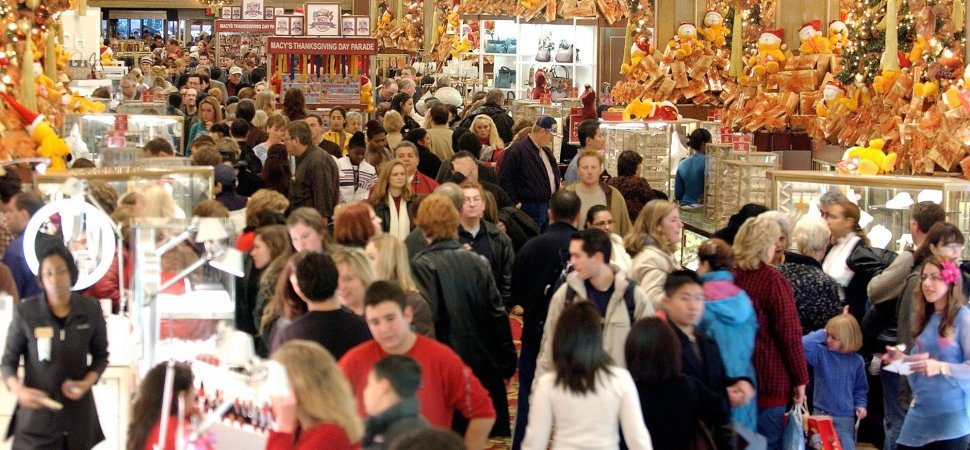News posted on: 2017/11/20 9:17:33 - by yoyo - RFIDtagworld XMINNOV RFID Tag Manufacturer


With every product from toilet paper to diamond rings available online, brick and mortar retailers are struggling to keep customer attention. Physical stores are closing their doors at an alarming pace. JC Penney is poised to close up to 140 stores this year, and Moody's Investors Service report warns that 18 other big retailers are at risk. A new era in retailing is needed.
To retain ever-demanding shoppers who have come to expect same-day delivery, dazzling customer service, and pinpoint targeted marketing that seeks to anticipate what the customer will want next, traditional stores need to step up their game. Radio-Frequency Identification (RFID) can help traditional retailers make it happen.
An RFID device is a small tag or label programmed with information that retailers can attach to anything. Unlike a barcode, a passive retailRFID tagor label enables every item to have a serial number and can be scanned from a variety of distances, typically over 10 feet. The technology has been around for about 50 years, but only recently became affordable enough for common use. About 8 percent of retailers have fully deployed RFID and are experiencing measurable results and ROI.
You've seen a similar concept, electronic article surveillance (EAS) tags in action; those big, clunky tags that set off alarms when the sales clerk forgets to remove them from an expensive item. The new breed of retail RFID tags are small, cheap, disposable, and their functions are more complex.
I spoke to Dean Frew, CTO of SML Group at a speaking event this week, about ways brick and mortar retailers can use RFID to revitalize sales. These are the three best ways according to the industry veteran.
1. Rethink delivery options
"One example of this approach is offering customers with confidence the option to order online for in-store pickup, also known as 'Click and Collect', which has increased significantly among major retailers," Frew explained. In fact, a recent survey of consumers found that more than 75 percent of respondents want to pick up online purchased in-store.
This is great news. Not only is the retailer able to solidify the omnichannel brand experience with 'Click and Collect', they can also capitalize on the additional point of purchase (POP) sales while the customer is in the store.
In 2016, Walmart introduced grocery pickup. Customers order online and pick up their groceries the next day, without getting out of their car. Last month, Publix rolled up its sleeves, said "hold my beer," and announced groceries delivered to your home in an hour. Place your order online and, in about the time it takes you to do your own shopping, your groceries show up at your door. Delivery is not free, but consumers will likely save money on impulse buys by avoiding psychological shopping tricks.
2. Drive accurate real-time inventory management
有什么比这更令人沮丧的发现mething online and dashing to the store, only to find the item you wanted was sold out? "Managing inventory in real time is easier than you might think. RFID technology allows retailers to tag each item and track it from arrival to sale," Frew added. "Handheld mobile powered RFID readers with inventory management software even make it easy for pickers to find items in the store, so they can find items ordered online for pickup."
RFID tracking enables the store to improve their inventory management accuracy from as low as 50% to over 98% and keeping fast-moving items in stock, which means happier customers and more sales. The data generated by the system provides valuable insight into consumer buying habits and prevents overbuying based on guesswork.
3. Creating delightful experience is the future of retail shopping
In the near future, some stores will move to RFID checkout. Amazon, always on the cutting edge, is already beta-testing Amazon Go, stores with no checkout process. Shoppers download an app, and add items to a digital cart. As they leave the store, the RFID scanner totals all the items in the cart and charges the customer's card on file.
"In theory, streamlined checkout will be faster and less frustrating for customers and staff alike," Frew said. "Freed from spending shifts scanning products, floor staff can concentrate on customer service and stocking. If there's one area where strictly retailers cannot hope to compete and customers value, it's personal, hands-on service."
Tomorrow's retail success lies in creating an effective, omnichannel customer experience. Some customers still want to feel the fabric, squeeze the avocados, and try on the shoes, but lack of time limits "blind" shopping trips for busy consumers. Modern shoppers just don't have the time to wander aimlessly around the mall, hoping to find the perfect birthday gift. It's up to retailers find ways to make shopping convenient, fast, and painless, whether that means real-time inventory, same day delivery, or virtual try before you buy.
Cellphone:
+86-13606915775(John Lee)
Phone:
+86-592-3365735(John)
+86-592-3365675(Cathy)
+86-592-3166853(Margaret)
+86-592-3365715(Anna)
+86-592-3365685(Ellen)
+86-592-3365681(Lynne)
Email:sales@www.rudramyoga.com
Add: No.943, Tonglong Er Lu, Hongtang Town, Tong'an District, Xiamen( Xminnov IOT Industrial Park)